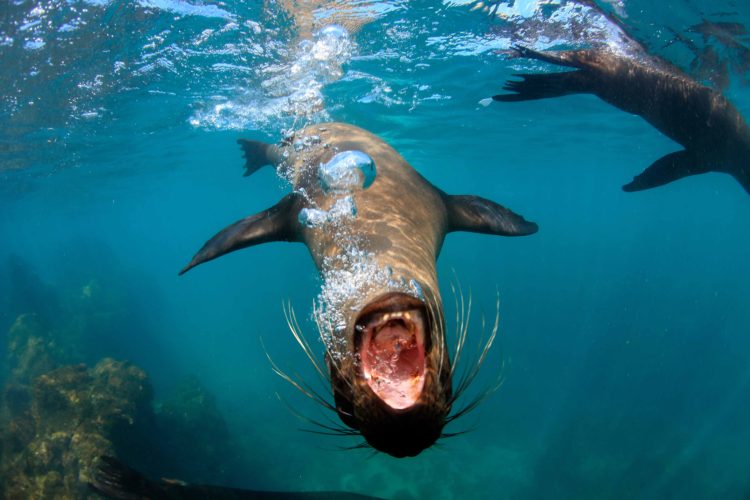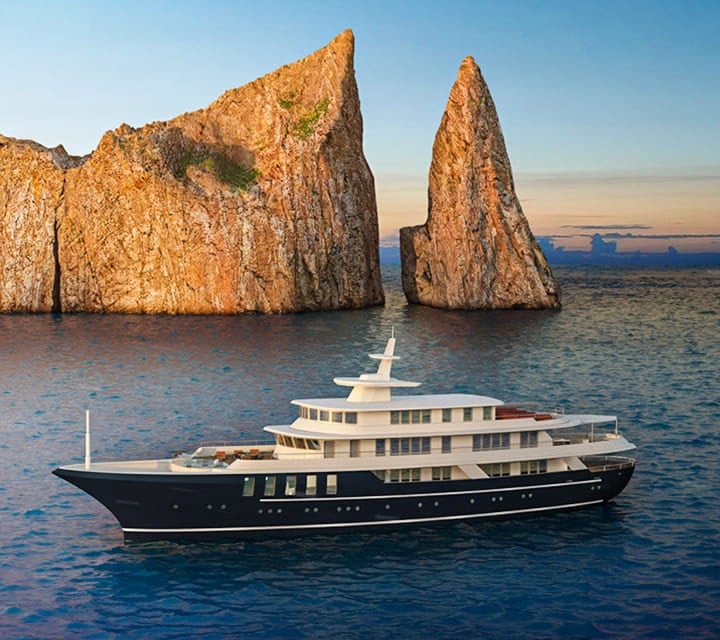From Lab Coat to Loggerheads: A Marine Biologist's Citizen Science Adventure in the Galapagos

Just back from two incredible weeks on San Cristobal Island, Galapagos, where I traded my lab coat for sunscreen and joined the Albatross Galapagos Conservation Project. As a marine biologist specializing in sea turtle conservation, I’ve always dreamed of seeing these islands, but this experience surpassed even my wildest expectations. Forget the typical tourist traps; this was about getting my hands dirty, contributing to vital research, and seeing the Galapagos through a conservationist's lens. This Galapagos Citizen Science Travel experience has reaffirmed my commitment to Galapagos Sea Turtle Conservation.
Nights on Playa Mann: Witnessing the Miracle of Nesting
One of the most unforgettable aspects of my time with the Albatross project was participating in nightly nest monitoring patrols. Picture this: Playa Mann, bathed in the soft glow of starlight, the air thick with the scent of salt and the rhythmic crash of waves. Equipped with red-filtered headlamps (crucial for minimizing disturbance to the turtles), we walked the beach, patiently scanning for signs of nesting female sea turtles.
The first time I witnessed a female emerge from the ocean, her ancient eyes reflecting the moonlight, I was speechless. The sheer effort involved in hauling her massive body onto the sand was evident in every labored breath. Our team meticulously measured her carapace, tagged her flipper for future identification, and recorded her location with GPS. Feeling the damp sand between my toes and hearing the powerful whoosh of her breath as she dug her nest was a truly humbling experience. This Galapagos Islands Nest Monitoring Project is vital for understanding turtle populations.
Hatchling Heroes: Guiding New Lives to the Sea
Nothing prepares you for the overwhelming joy of participating in a hatchling release. After weeks of anticipation, the eggs we carefully monitored began to hatch. Under the cloak of a star-filled sky, we gently guided the tiny turtles, each no bigger than my palm, as they instinctively scrambled towards the ocean. The determination in their minuscule flippers, their relentless drive to reach the water, was truly inspiring. Knowing that we were playing a part, however small, in helping these vulnerable creatures on their perilous journey was deeply satisfying. A true testament to the power of Galapagos Hatchling Release Volunteering.

Battling the Plastic Tide: A Beach Cleanup with a Purpose
The stark reality of plastic pollution hit home during a beach cleanup initiative at a remote cove. The sheer volume of plastic waste was staggering – bottles, bags, fishing gear, and countless unidentifiable fragments. It was a sobering reminder of the global impact of our consumption habits and the urgent need to reduce our plastic footprint. While disheartening, the experience also fueled my determination to advocate for responsible waste management and promote Galapagos Plastic Cleanup Volunteer opportunities.
Kicker Rock: A Snorkeling Paradise
Beyond the crucial conservation work, I also had the opportunity to explore the Galapagos' incredible marine biodiversity. A boat trip to Kicker Rock (Leon Dormido), a towering volcanic formation rising from the turquoise water, was an absolute highlight. Snorkeling in the crystal-clear water surrounding the rock was like entering another world. Vibrant coral reefs teemed with life, from colorful reef fish to graceful sea turtles gliding effortlessly through the water. The highlight? A close encounter with a school of hammerhead sharks – a truly awe-inspiring sight. Playful sea lions zipped past, adding to the magic of the experience. This Kicker Rock Snorkeling Galapagos trip exceeded all expectations.
Responsible Ecotourism: Contributing to Conservation
Volunteering with Albatross Galapagos Conservation Project
My primary role with the Albatross Galapagos Conservation Project involved assisting with nest monitoring, data collection, and hatchery maintenance. One specific task I found particularly rewarding was cleaning out old turtle nests after the hatchlings had emerged. This ensured the nests were free of debris and ready for future nesting females. This hands-on experience reinforced the importance of Galapagos volunteer opportunities marine biology.
Learning at the Charles Darwin Research Station
A visit to the Charles Darwin Research Station provided valuable insights into the ongoing research and conservation efforts across the Galapagos Islands. A lecture on the challenges facing the Galapagos finches, iconic symbols of evolution, was particularly enlightening. Hearing about the innovative strategies being employed to protect these vulnerable birds reinforced the importance of long-term monitoring and adaptive management.
Sustainable Agriculture: A Taste of the Galapagos
I also had the privilege of visiting a local farm practicing sustainable agriculture. Learning about endemic fruits and vegetables, such as Galapagos tomatoes and passion fruit, and seeing firsthand the efforts to minimize environmental impact was inspiring. It highlighted the potential for Eco-Tourism Galapagos Islands to support local communities and promote responsible farming practices.
A Taste of Paradise: Sustainable Dining in San Cristobal
One evening, I was invited to share a meal with the local researchers at their research station. We enjoyed grilled, sustainably sourced Galapagos grouper, seasoned with local herbs and served with rice and a vibrant salad made from endemic Galapagos tomatoes and passion fruit. The flavors were exquisite, and the conversation around the table, focused on the challenges and triumphs of conservation in the Galapagos, was both stimulating and motivating. Seeking out Sustainable restaurants San Cristobal Galapagos truly enhances the trip.
Landscapes That Inspire: Volcanic Majesty
The Galapagos Islands are a visual feast. The stark contrast between the black lava rocks and the turquoise water is breathtaking. Marine iguanas, prehistoric-looking reptiles, basked in the sun, adding to the surreal atmosphere. Hiking through a lava tunnel, feeling the cool, damp air and sensing the immense geological history, was a humbling experience. A visit to El Junco Lake, a caldera lake high in the highlands, offered panoramic views of the island and the opportunity to observe unique birdlife.
Eco-Friendly Accommodations: Where to Stay Responsibly
Choosing responsible accommodations is crucial for Sustainable Galapagos Eco-Tourism.
Pikaia Lodge: This mid- to high-price-point lodge exemplifies sustainable luxury. Their commitment to rainwater harvesting, solar energy use, and support for local communities is commendable. The design of the lodge seamlessly blends into the natural environment, minimizing its impact on the landscape.
Casa Opuntia: A more budget-friendly option, Casa Opuntia is a locally owned guesthouse that directly contributes to the local economy. Their efforts to reduce waste and conserve water demonstrate a genuine commitment to environmental responsibility.
Choosing either of these options contributes to San Cristobal Island responsible tourism.
Your Galapagos Adventure Awaits: Embrace Responsible Travel
My experience in the Galapagos was transformative. It deepened my understanding of sea turtle conservation, reinforced the importance of responsible ecotourism, and left me with a profound appreciation for these unique islands. If you're passionate about wildlife conservation and want to experience the Galapagos in a meaningful way, I highly recommend considering a citizen science project. It's an unforgettable experience that will leave you with a deeper appreciation for these unique islands and the efforts to protect them. Check out Albatross Galapagos Conservation Project at [Fictional Website] to see how you can contribute.